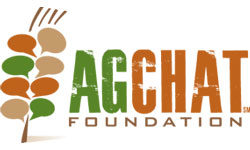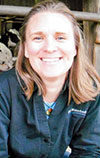Just a decade ago, the media was dominated by a few (very loud) voices. We watched the TV news at 5 p.m. and read the newspaper over coffee. If, as a farmer or a manufacturer or an inventor, we wanted to tell our story, we wrote up a press release and faxed it out - hoping someone would bite. Or, we sank thousands into advertising. For the most part, farmers didn't need to hire a big-city public relations firm to tell consumers that milk came from cows. Then came the social media revolution.
For the first time in history, the "gatekeepers" of media didn't have the power to pick through a pile of press releases and decide which story to run or which consumer questions to answer (and which to ignore). Suddenly every individual had a public voice and a collective of individuals could create a revolution in a matter of days (literally, in some cases).What happened next?
An overwhelming number of questions came pouring out of the consumer sector. Suddenly, people who previously thought to themselves "I wonder how many gallons of milk comes from a single cow each day?" could simply Google it. And if they couldn't find out through Google, they could post the question on their Facebook page. Conversations got started and questions got answered.
The problems and uncertainty for farmers (and all industries) in this open information marketplace lies in the fact that the people who "answer" may have no idea what they are talking about. Misinformation becomes fact. Complicated answers become black-and-white. Conversation becomes argument.
This scenario of question/answer has played out in every industry in every sector in every marketplace. People want to know who is making, growing, shipping and selling the products they buy, eat and use. And they have the right to know. And we should be proud to share our stories with them. The more consumers understand the diverse, complex and fascinating world of food production, the more respect and understanding the industry will earn.
What do we do now?
It's simple: we embrace transparency and tell our stories honestly with the people we work with, sell to, and learn from.
It's called public relations, agvocacy, conversation, or more simply, storytelling.
We are proud of what we do and are proud of our industry. We put food on the table of hundreds of millions of families each day in North America alone. And we stand together against bad actors and actions.
Of course we must listen to and acknowledge the concerns of those who trust us with their dinners, but with our voices, we must focus on our stories: our future, our technology, our commitment to safety, health, and social and environmental responsibility, our love of the land and our way of life, our dedication to our families. We admit our shortcomings and work to improve.
The more of us who choose to engage proactively and productively in conversation with the consumer audience, the more powerful our message will be. The tools we can use are Facebook, Twitter, blogs, and Google+ (to name just a few).
As an ag business newbie and self-proclaimed city slicker, I was honored to be invited to the second Agvocacy 2.0 conference in Nashville, Tennessee, last month. The AgChat Foundation, a social media advocacy organization established to “empower farmers and ranchers to connect communities through social media platforms" held the conference to connect and teach ag professionals like me (and you) how to effectively use online platforms to help us tell our stories.
As I sat in the room a hundred ag professionals who have embraced social media and are using these tools to share these messages, I began to think of all of the millions of others who have yet to engage. Yes, the conference was amazing and I learned a lot. Yes, I think you should try to go, if you can. But, yes, I also understand that many farmers and ag professionals don't have the time or knowledge to jump into Facebook or Twitter and figure it out.
One of the key messages of Jeff Fowle, AgChat Foundation past board president, in his opening remarks at the Agvocacy 2.0 conference was "reach beyond the choir."
In my attempt to reach beyond the choir, I am appealing to you — the farmer and industry professional who doesn't know where to start — pick one place to start.
Set up a Twitter account (it's simple) and follow @AgChat, @agchatfound and me (@amyserves). I'll help you figure out how to follow along during the weekly AgChat. You can start by just reading the conversation.
Make a Facebook page for your farm (ask around! Your local Chamber of Commerce can probably help, or your teenage kid, for sure!). Connect locally, regionally and through the industry and share your daily life. Start by connecting with others through AgChat Foundation’s page (https://www.facebook.com/AgChatFoundation).
Visit www.agchat.org and read a few of the blog posts highlighted to get an idea about what other people are writing.
If you have something to say, but aren’t sure which avenue to take, connect with the AgChat community or email me and I can try to help.
We're all in this together. We're our own gatekeepers and our own storytellers, and through agvocacy, we are our own public relations machine.
Let's use the tools we have available and get our story out. It's one we can all be proud to share. PD
As the marketing and business development director for DCC Waterbeds (Dual Chamber Cow Waterbeds), Amy Throndsen supports the international dealer base, manages and develops corporate communications including social media, and integrates new technologies into overall business functions. Eleven years ago Amy’s father began telling the “waterbeds for cows” story in North America, and in the early 2000s, he patented the dual-chamber design. Amy recently transitioned to her role with DCC Waterbeds after a 10-year career in public service, including serving with AmeriCorps and Peace Corps (China). For more information on Amy and DCC Waterbeds, visit www.advancedcomforttechnology.com or find Amy on Twitter: @amyserves.
PLUS, be sure you're following these social media accounts from Progressive Dairyman.
• Facebook: www.facebook.com/progressivedairyman
• Twitter: @PDmag
• YouTube: www.youtube.com/user/pdwebmaster
• Proud to Dairy: www.proudtodairy.com





